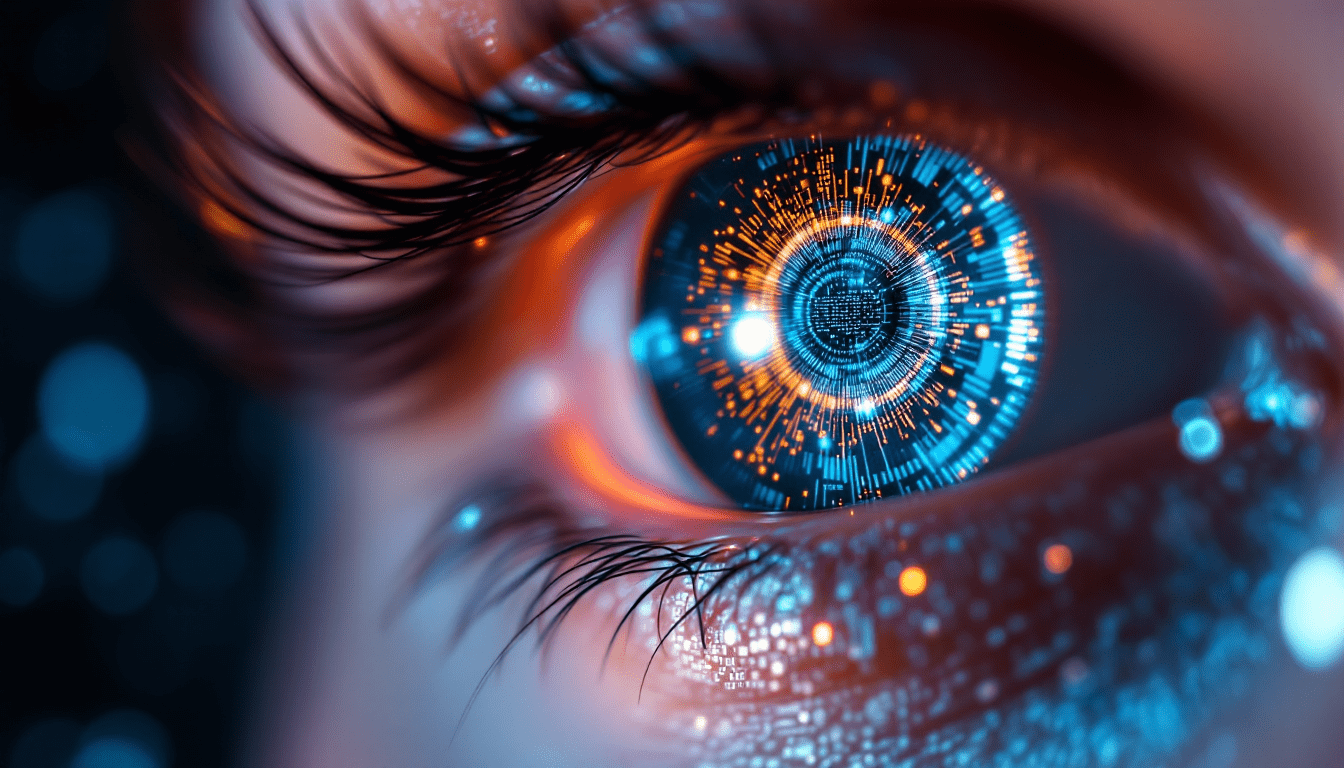AR/XR Contact Lenses

The human eye represents nature's most sophisticated optical instrument, capable of detecting single photons whilst dynamically adjusting to luminance variations spanning twelve orders of magnitude. Now, British scientists and engineers stand poised to transform this biological marvel into a gateway for digital augmentation through contact lenses incorporating displays, processors, and wireless communication systems measuring mere millimetres across. These augmented reality contact lenses would render smartphones, tablets, and conventional displays obsolete, projecting information directly onto the retina whilst maintaining complete invisibility to observers.
The fundamental architecture of AR contact lenses centres on micro-LED arrays measuring less than 50 micrometres per pixel—smaller than human red blood cells. These displays employ quantum dot technology, where semiconductor nanocrystals measuring 2-10 nanometres emit precise wavelengths when electrically stimulated. By embedding approximately 14,000 micro-LEDs within a contact lens's transparent polymer matrix, engineers could achieve resolution exceeding standard definition video whilst consuming mere microwatts of power.
The optical challenge involves projecting images from a curved surface millimetres from the eye onto the retina located 24 millimetres away. Conventional optics would require lenses thicker than golf balls. Instead, researchers employ femtoprojector technology—arrays of microscopic lasers using waveguide optics to direct coherent light beams directly through the pupil. Each femtoprojector measures just 30 micrometres in diameter, containing vertical-cavity surface-emitting lasers, focusing optics, and beam-steering mechanisms fabricated through semiconductor lithography.
Recent breakthroughs at Cambridge's Centre for Advanced Photonics demonstrate functional femtoprojector arrays achieving 120-degree field of view—matching natural human vision. The projectors dynamically adjust focal depth through liquid crystal lenses, enabling simultaneous display of near and distant virtual objects. Aberration correction algorithms compensate for individual eye imperfections, delivering sharper images than natural vision for users with astigmatism or presbyopia.
The Engineering Marvel of Miniaturised Computing
Embedding computational power within a contact lens requires revolutionary approaches to processor design and thermal management. British researchers have developed transparent processors using indium gallium zinc oxide semiconductors, achieving 2-gigahertz clock speeds whilst maintaining 85% optical transmission. These processors, measuring just 2 millimetres square and 100 micrometres thick, incorporate 50 million transistors—comparable to desktop processors from the early 2000s.
The architecture employs neuromorphic computing principles, mimicking brain neural networks rather than traditional von Neumann designs. Spiking neural networks process visual information using 1,000 times less energy than conventional processors by computing only when detecting changes, similar to retinal ganglion cells. This approach enables real-time augmented reality rendering whilst consuming less than 100 microwatts—sustainable through energy harvesting alone.
Memory storage utilises ferroelectric random-access memory fabricated in three-dimensional arrays within the lens periphery. Each memory cell measures just 20 nanometres, storing data through polarisation states in hafnium oxide crystals. With 128 gigabytes storage capacity, lenses could cache extensive augmented reality content, personal data, and artificial intelligence models for offline operation.
Thermal management proves critical, as temperature increases beyond 3°C above body temperature cause discomfort and potential corneal damage. Engineers employ microscopic heat pipes—channels filled with phase-change materials—distributing heat throughout the lens structure. Graphene heat spreaders, measuring one atom thick, conduct thermal energy to the lens edges where tear fluid provides convective cooling. Advanced designs incorporate thermoelectric generators, converting waste heat into electrical power, achieving energy recovery efficiencies approaching 15%.
Power Generation Through Biological and Environmental Sources
Powering AR contact lenses requires energy harvesting from multiple sources, as batteries remain impractical for daily-wear devices. They could entail biofuel cells oxidising glucose and oxygen present in tear fluid, generating 4 microwatts per square centimetre continuously. The enzymatic electrodes employ glucose oxidase and laccase catalysts immobilised within carbon nanotube matrices, achieving operational lifetimes exceeding six months.
Photovoltaic cells integrated within the lens periphery capture ambient light, contributing additional power. Using organic photovoltaics based on non-fullerene acceptors, these transparent cells achieve 15% efficiency whilst maintaining 90% transmission in non-active areas. Under typical indoor lighting of 500 lux, photovoltaic generation provides 50 microwatts—sufficient for basic display operation.
Radio frequency energy harvesting represents the most promising power source, capturing electromagnetic radiation from WiFi routers, mobile phone towers, and dedicated power beacons. Metamaterial antennas, consisting of split-ring resonators measuring 100 micrometres, achieve reception efficiencies exceeding 70% at 2.4 and 5 gigahertz frequencies. British researchers have demonstrated 200 microwatts continuous power delivery from a beacon located 5 metres away—adequate for full augmented reality functionality.
Mechanical energy harvesting through eye movements and blinking provides supplementary power. Piezoelectric nanogenerators using zinc oxide nanowires generate voltage spikes reaching 0.8 volts during rapid eye movements. Whilst contributing just 10 microwatts average power, this mechanism enables wake-up functions and gesture recognition without depleting primary power reserves.
Supercapacitor energy storage smooths power delivery fluctuations, essential for consistent user experience. Graphene-based microsupercapacitors integrated within the lens achieve energy densities of 50 watt-hours per kilogram whilst surviving millions of charge cycles. These devices charge in milliseconds during power availability peaks, supplying burst power for computationally intensive tasks like image recognition or wireless transmission.
Wireless Communication and Data Architecture
Establishing high-bandwidth wireless communication from devices measuring 14 millimetres diameter presents extraordinary challenges. Conventional WiFi and Bluetooth transceivers cannot achieve sufficient miniaturisation whilst maintaining acceptable power consumption. British engineers have developed innovative solutions using backscatter communication and optical wireless technologies.
Backscatter systems modulate ambient radio frequency signals rather than generating their own transmissions, reducing power consumption by 1,000-fold compared to active transmitters. The lens antenna impedance varies according to transmitted data, altering reflected signal characteristics detectable by nearby receivers. This approach enables 10-megabit-per-second uplink speeds whilst consuming just 15 microwatts—primarily for signal processing rather than transmission.
Visible light communication offers higher bandwidth for downlink data. Ambient LED lighting, modulated at frequencies exceeding human perception, transmits data to photosensors integrated within contact lenses. British researchers have achieved 1-gigabit-per-second transfer rates using orthogonal frequency-division multiplexing across multiple LED sources. This enables streaming of high-definition augmented reality content without radio frequency emissions—critical for medical environments where electromagnetic interference poses risks.
For peer-to-peer communication between paired lenses, researchers employ near-field magnetic induction. Coils embedded within each lens create oscillating magnetic fields penetrating through the nasal bridge, enabling 100-megabit-per-second inter-lens communication whilst remaining undetectable beyond 10 centimetres. This ensures visual synchronisation and enables computational load sharing between lenses.
Edge computing architectures minimise communication requirements by processing data locally. Machine learning models compressed through knowledge distillation run directly on lens processors, performing facial recognition, object identification, and simultaneous localisation and mapping without cloud connectivity. Only unusual or ambiguous cases require remote processing, reducing latency and preserving privacy.
Biocompatibility and Long-term Ocular Health
Ensuring AR contact lenses cause no harm during extended wear requires meticulous attention to biocompatibility and oxygen permeability. The base material employs silicone hydrogel polymers similar to conventional extended-wear lenses, maintaining 150 Dk/t oxygen transmissibility—exceeding corneal metabolic requirements. However, embedded electronics create impermeable regions potentially causing localised hypoxia.
British bioengineers have developed "breathing" electronic substrates using nanoporous silicon dioxide enabling oxygen diffusion through circuit elements. Interconnects employ graphene ribbons providing electrical conductivity whilst permitting gas permeation. These innovations maintain corneal oxygen levels above 95% saturation even with 30% lens area occupied by electronics—preventing neovascularisation and epithelial oedema.
Antimicrobial coatings prevent bacterial adhesion and biofilm formation, addressing infection risks associated with extended wear. Silver nanoparticles embedded within zwitterionic polymer brushes provide sustained antimicrobial activity whilst remaining non-cytotoxic to corneal cells. The coatings demonstrate 99.9% reduction in Pseudomonas aeruginosa and Staphylococcus aureus adhesion—the primary pathogens causing microbial keratitis.
Tear film stability requires careful surface engineering to prevent dry eye symptoms. The lens surface incorporates hyaluronic acid and phosphorylcholine groups mimicking natural mucin glycoproteins, maintaining tear film thickness exceeding 3 micrometres. Integrated sensors monitor tear osmolarity and pH, alerting users to remove lenses if parameters indicate developing complications.
Long-term biocompatibility studies using organ-on-chip corneal models demonstrate no adverse effects after six months' continuous exposure. Histological analysis reveals no inflammatory responses, epithelial thinning, or stromal alterations. However, clinical trials spanning multiple years remain necessary before regulatory approval for consumer use.
User Interface Revolution Through Eye Tracking and Neural Integration
The user interface for AR contact lenses transcends conventional input paradigms, responding to eye movements, blinks, and eventually neural signals. Integrated eye tracking using photodiode arrays detects gaze direction with 0.5-degree accuracy, enabling selection through fixation and scrolling through smooth pursuit movements. Saccade patterns provide gesture recognition—specific eye movement sequences triggering commands like double-blinking to capture images.
Accommodative depth sensing measures lens crystalline shape changes when focusing at different distances, enabling three-dimensional interface navigation. Users "push" virtual buttons by focusing beyond them or "pull" objects closer through near-focus. This natural interaction method requires no learning, leveraging innate visual behaviours developed throughout evolution.
British neuroscientists at UCL are developing brain-computer interfaces specifically for AR lens control. Electroencephalography sensors incorporated within lens temples—thin extensions resting against the temporal bone—detect neural oscillations associated with intended actions. Machine learning algorithms trained on individual users achieve 85% accuracy distinguishing between imagined commands after just one hour of calibration.
Future iterations might incorporate direct retinal sensing of neural activity. The retina, being central nervous system tissue, generates detectable electrical signals during visual processing. By monitoring these signals, lenses could anticipate user intentions before conscious eye movements occur, enabling thought-speed interaction. Preliminary experiments demonstrate feasibility, though significant development remains necessary.
Haptic feedback through focused ultrasound provides tactile sensations for virtual object manipulation. Ultrasound transducers within the lens generate acoustic pressure waves converging at specific spatial coordinates, creating perceivable touch sensations mid-air. Users report feeling virtual buttons depress and textures of augmented objects—crucial for intuitive interaction without physical controllers.
Transformative Applications Across Human Experience
AR contact lenses would fundamentally transform professional fields, beginning with surgery where real-time anatomical overlays guide procedures with unprecedented precision. Surgeons would visualise patient CT scans superimposed on actual anatomy, revealing tumour boundaries, blood vessel positions, and optimal incision paths. Fluorescent markers injected preoperatively would highlight cancerous tissue invisible to naked eyes, ensuring complete resection whilst preserving healthy tissue.
Educational applications would revolutionise learning through immersive visualisation and persistent information access. Students studying chemistry would observe three-dimensional molecular structures floating before them, manipulating bond angles and electron orbitals through gaze control. Historical events would replay as augmented scenes overlaid on relevant locations—standing in Parliament, students would witness Churchill's wartime speeches as if present.
Navigation transcends traditional maps through environmental augmentation. Rather than consulting screens, users would follow illuminated paths appearing to paint themselves onto pavements, adjusting dynamically for traffic and obstacles. Public transport information would hover above stations, counting down arrival times and indicating optimal carriages for destinations. Foreign language text would translate instantly, appearing to rewrite itself in the user's native language.
Professional training achieves new sophistication through persistent expert guidance. Apprentice electricians would see wiring diagrams overlaid on actual circuits, with current flow visualised through animated electrons. Cooking students would observe temperature gradients within pans and optimal knife angles for various cuts. Aircraft maintenance engineers would receive step-by-step visual instructions synchronised with repair manuals, preventing errors through real-time verification.
Social interactions gain richness through shared augmented experiences. Conversation partners would exchange visual thoughts—imagined concepts appearing between speakers for collaborative refinement. Business presentations would escape screen confines, with data visualisations filling entire rooms, manipulatable by all participants simultaneously. Dating profiles would float discreetly above potential matches in social settings, facilitating connections whilst maintaining plausible deniability.
Security, Privacy, and Ethical Considerations
The intimate nature of AR contact lenses raises profound security concerns requiring revolutionary cryptographic approaches. British cybersecurity researchers propose homomorphic encryption enabling computation on encrypted visual data without decryption. Personal information remains protected even during cloud processing, with only users possessing decryption keys for final results. Quantum key distribution through optical channels ensures unbreakable communication security.
Privacy preservation demands careful consideration of bystander rights. Lenses capable of continuous recording raise surveillance concerns exceeding current smartphone capabilities. Proposed regulations would mandate visible indicators when recording—perhaps subtle iris colour changes detectable by other AR lens users. Blockchain-based consent systems could enable automatic permission management, with individuals broadcasting recording preferences detected and respected by nearby devices.
Biometric security using iris recognition provides unbreakable authentication, as lenses rest directly on the unique tissue. However, this proximity enables unprecedented biometric collection. Continuous health monitoring through tear biomarker analysis, whilst medically valuable, creates vast databases of physiological information requiring stringent protection. British data protection frameworks would need substantial evolution addressing these novel privacy challenges.
The potential for augmented reality addiction presents serious psychological risks. Constant information overlay might impair focus, memory formation, and present-moment awareness. Neuroscientists warn of "augmented reality disorder"—psychological dependence on enhanced perception leading to anxiety when experiencing unaugmented reality. Mandatory "reality breaks" and gradual adoption protocols might prove necessary, similar to screen time limitations for children.
Information authenticity becomes critical when augmented content appears indistinguishable from reality. Malicious actors could inject false information—imagine historical monuments displaying propaganda or navigation directing victims toward dangers. Cryptographic signing of legitimate content and crowd-sourced verification systems would provide essential safeguards. British institutions might establish "reality authorities" certifying augmented content accuracy.
Manufacturing Complexity and Economic Transformation
Producing AR contact lenses requires cleanroom facilities exceeding semiconductor fabrication standards. Particle contamination tolerance measures in parts per trillion, as single dust specks could cause corneal abrasions. British manufacturers would need to invest billions establishing production facilities combining semiconductor foundries, precision optics assembly, and medical device manufacturing under one roof.
The supply chain complexity spans dozens of specialised industries. Quantum dots require rare earth elements; femtoprojectors need specialised optical materials; biocompatible polymers demand pharmaceutical-grade production. Britain's competitive advantage lies in integrating these diverse capabilities, leveraging our strengths in materials science, photonics, and biomedical engineering.
Economic modelling suggests initial AR contact lenses would cost £10,000-15,000 per pair, limiting adoption to medical applications and affluent early adopters. However, manufacturing economies of scale could reduce costs to £500-1,000 within a decade—comparable to high-end smartphones. Subscription models providing regular upgrades might accelerate adoption, similar to mobile phone contracts.
The economic disruption would eliminate entire industries whilst creating new ones. Screen manufacturers, smartphone producers, and television makers would face obsolescence. Conversely, content creation for augmented reality would generate millions of jobs. British creative industries, already world-leading in visual effects and gaming, could dominate augmented reality experience design.
Insurance and liability frameworks require complete reconceptualisation. If AR lenses cause accidents through distraction or malfunction, determining responsibility between users, manufacturers, and content providers proves complex. British legal systems would need precedent-setting cases establishing liability principles for augmented reality mishaps.
Societal Transformation and Human Evolution
Widespread AR contact lens adoption would represent humanity's first successful merger with digital technology, marking a new chapter in human evolution. The distinction between "real" and "digital" would dissolve—virtual objects would possess equal phenomenological validity to physical ones. Philosophy departments would grapple with updated ontological questions about reality's nature when perception becomes infinitely malleable.
Social stratification might emerge between "enhanced" and "natural" humans. Those affording AR lenses would access information, experiences, and capabilities unavailable to others. Educational advantages would compound—enhanced students learning faster through optimised visualisation and persistent AI tutoring. Governments might subsidise AR lenses as essential utilities, preventing digital apartheid.
Human memory could atrophy as external recording supersedes biological recall. When every moment becomes retrievable, the evolutionary pressure maintaining memory capacity diminishes. Conversely, cognitive capabilities might expand through direct neural-digital integration, enabling thought-speed information processing currently impossible. British neuroscientists debate whether this represents enhancement or fundamental alteration of human nature.
Cultural evolution would accelerate as ideas spread instantly through shared augmented experiences. Artistic expression would escape physical constraints—sculptures floating impossibly, paintings extending beyond frames, music visualised as synaesthetic colour storms. British cultural institutions would require reimagining—museums becoming portals to infinite virtual collections, theatres staging performances blending physical and digital actors.
The psychological impact spans from liberation to alienation. Individuals could customise reality to preferences—arachnophobes could render spiders invisible, urbanites could overlay countryside views onto concrete. Yet this customisation might create experiential isolation, with each person inhabiting unique augmented bubbles. Maintaining shared reality sufficient for societal cohesion presents profound challenges requiring careful consideration.
Britain's Strategic Opportunity
Britain possesses unique advantages positioning us to lead AR contact lens development. Our excellence in materials science, particularly at Cambridge and Imperial, provides crucial expertise in biocompatible electronics. The NHS offers unparalleled clinical trial infrastructure for medical device validation. Our creative industries lead globally in content creation essential for compelling augmented reality experiences.
Government investment through UKRI focusing on AR contact lens development could establish Britain as the global hub for this transformative technology. Creating national augmented reality laboratories, similar to successful graphene institutes, would concentrate expertise and accelerate development. Tax incentives for AR lens startups could attract international talent and investment.
The regulatory environment requires proactive development rather than reactive restriction. Britain could establish worldwide standards for AR lens safety, privacy, and interoperability. By leading regulatory frameworks, we would shape the global industry whilst providing certainty for domestic developers. The MHRA could become the trusted international authority for AR lens certification.
International collaboration, particularly with Commonwealth nations, could create vast markets for British AR lens technology. India's software expertise combined with British hardware could accelerate development whilst accessing billions of potential users. Educational partnerships would ensure developing nations participate in the augmented reality revolution rather than being excluded.
The stakes could not be higher. AR contact lenses represent potentially the final form factor for human-computer interaction—the ultimate interface making all others obsolete. Nations dominating this technology would shape humanity's perceptual reality for generations. Britain must act decisively, leveraging our scientific excellence and creative ingenuity to lead this transformation. The alternative—becoming mere consumers of others' augmented realities—would represent a historical missed opportunity of unprecedented magnitude.



